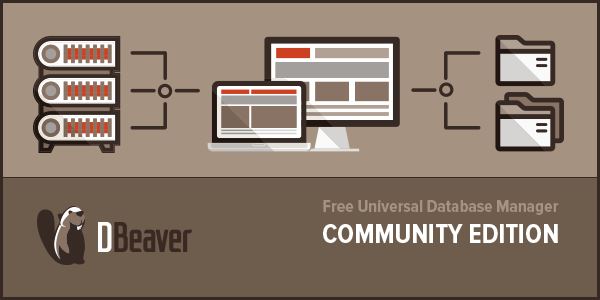
It is a free multi-platform database tool for developers, SQL programmers, database administrators and analysts. Supports all popular databases: MySQL, PostgreSQL, SQLite, Oracle, DB2, SQL Server, Sybase, Teradata, MongoDB, Cassandra, Redis, etc. Supports all popular relational databases: MySQL, PostgreSQL, SQLite, Oracle, DB2, SQL Server, MariaDB, Sybase, Teradata. And DBeaver has incorporated. DBeaver vs pgAdmin: What are the differences? DBeaver: A Universal Database Tool. It is a free multi-platform database tool for developers, SQL programmers, database administrators and analysts. Supports all popular databases: MySQL, PostgreSQL, SQLite, Oracle, DB2, SQL Server, Sybase, Teradata, MongoDB, Cassandra. DBeaver is certainly an ultimate Universal client which incorporates RDBMS and NoSQL Databases. The GUI is very useful and easy to manipulate all kind of DB queries.DBeaver is remarkably fast and stable. It loads quickly and responds instantaneously. Especially, It is the only client tool for Apache Cassandra NoSQL Database in market.
How to install DBeaver on CentOS
For ease of access and work with databases, it's always good to have the GUI. Yes, working with a large number of databases sometimes requires us to use GUI solutions. I personally prefer console access to the database. But, in scenarios with a focus on the underlying cause, any GUI is welcome. Today, we will run through the process of how to install DBeaver on CentOS.
Dbeaver Teradata Setup
DBeaver is the database management tool and if you are installing it on a remote CentOS server, make sure you have the RDP service installed first! Otherwise, just continue from here.
Pre-requirements
Before we can install DBeaver on CentOS let's make sure that we have at least one of the database engines installed. This is a list of DBeaver supported database engines:
- MySQL
- PostgreSQL
- MariaDB
- SQLite
- Oracle
- DB2
- SQL Server
- Sybase
- MS Access
- Teradata
- Firebird
- Derby
We are going to use the MariaDB server as it's already installed on our test server. If you don't have it, follow these steps to install MariaDB on CentOS server.

Now, let's install a must-have requirement, JAVA:
Check if it's installed by running:
Installation

Dbeaver Teradata Ldap
Download the DBeaver package:
Execute the installation:
That's it! Now, find the launcher for DBeaver and hit it:
If you want, DBeaver can create a test database for you to begin exploring it. Otherwise, you can connect it to your own database and continue from there.
Connect to Database
Let's connect the DBeaver to our database now! First, navigate to Database - New Database Connection:
Next, let's select our database engine (in our case MariaDB):
Dbeaver Teradata Slow

Almost there! Now, use our database user credentials to connect DBeaver to MariaDB:
Dbeaver Teradata
That's it, now we can see our local databases served by MariaDB server:
Voila! Now, the real work can begin 😁! Read you later ✌️.
Related Articles:
How to install MariaDB on CentOS
How to install Remote Desktop Service on the CentOS
- Dark theme support was improved (Windows 10 and GTk)
- Data viewer:
- Copy As: format configuration editor was added
- Extra configuration for filter dialog (performance)
- Sort by column as fixed (for small fetch sizes)
- Case-insensitive filters support was added
- Plaintext view now support top/bottom dividers
- Data editor was fixed (when column name conflicts with alias name)
- Duplicate row(s) command was fixed for multiple selected rows
- Edit sub-menu was returned to the context menu
- Columns auto-size configuration was added
- Dictionary viewer was fixed (for read-only connections)
- Current/selected row highlighting support was added (configurable)
- Metadata search now supports search in comments
- GIS/Spatial:
- Map position preserve after tiles change
- Support of geometries with Z and M coordinates was added
- Postgis: DDL for 3D geometry columns was fixed
- Presto + MySQL geometry type support was added
- BigQuery now supports spatial data viewer
- Binary geo json support was improved
- Geometry export was fixed (SRID parameter)
- Tiles definition editor was fixed (multi-line definitions + formatting)
- SQL editor:
- Auto-completion for objects names with spaces inside was fixed
- Database objects hyperlinks rendering was fixed
- SQL Server: MFA (multi-factor authentication) support was added
- PostgreSQL: array data types read was fixed
- Oracle: indexes were added to table DDL
- Vertica: LIMIT clause support was improved
- Athena: extra AWS regions added to connection dialog
- Sybase IQ: server version detection was improved
- SAP ASE: user function loading was fixed
- Informix: cross-database metadata read was fixed
- We migrated to Eclipse 2021-03 platform
